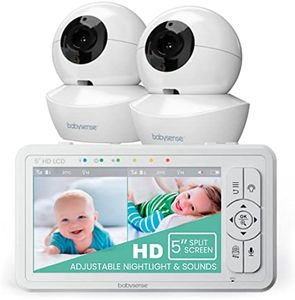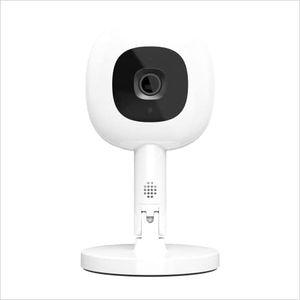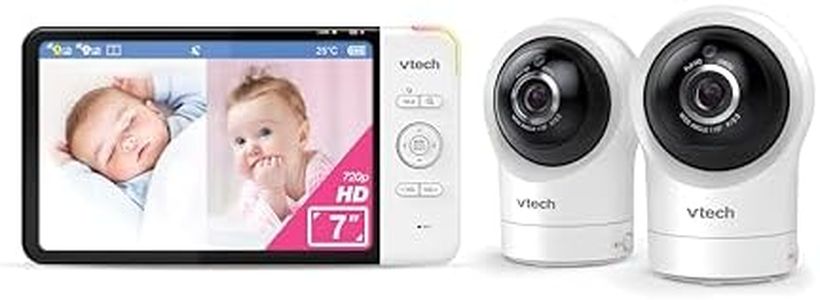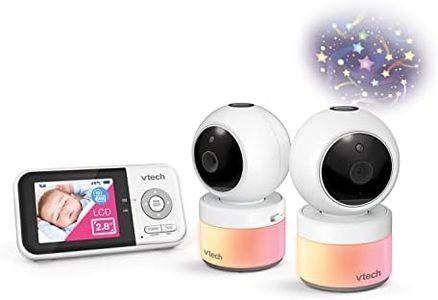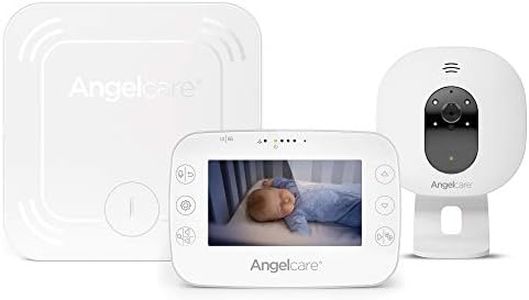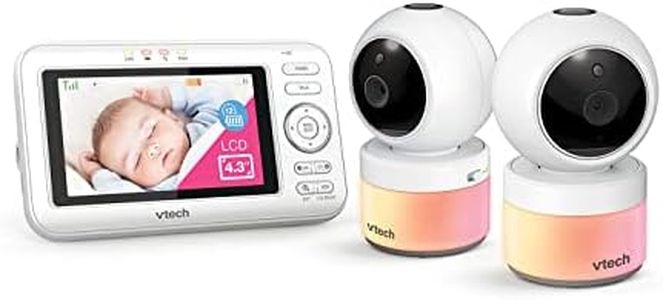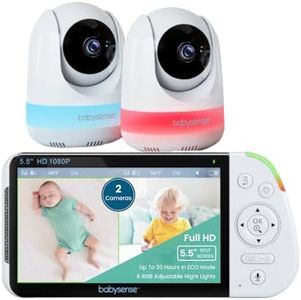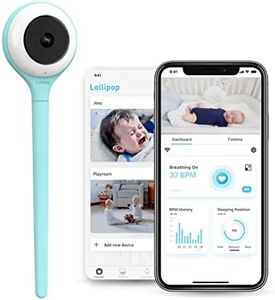We Use CookiesWe use cookies to enhance the security, performance,
functionality and for analytical and promotional activities. By continuing to browse this site you
are agreeing to our privacy policy
10 Best Baby Monitors For Twins
From leading brands and best sellers available on the web.Buying Guide for the Best Baby Monitors For Twins
When choosing a baby monitor for twins, your goal is to ensure both safety and peace of mind by being able to easily see and hear both babies, possibly in different cribs or rooms. You'll want a system that makes monitoring two children convenient and reliable, allowing you to respond quickly when needed. Think about your daily routine and the layout of your home to help determine which features will be most useful for you.Camera Count or ExpandabilityThis spec tells you how many cameras the monitor works with or can support. For twins, having either two cameras or support for adding extra cameras is crucial since each camera can cover a crib or designated sleeping area. Some monitors come as a bundle with two cameras, while others allow you to add more cameras later. If your twins will not always be in the same place, or if you plan to expand your monitoring to more rooms, opt for a system that supports multiple cameras. Parents with twins in the same room might only need two cameras, positioned to cover each crib individually.
Split-Screen or Camera Switching FeaturesThis is about how the monitor displays video from more than one camera. Split-screen features allow you to watch both camera feeds at the same time, which means you can check on both babies without toggling back and forth. Some monitors switch automatically between camera feeds, while others let you change manually. For continuous monitoring of both twins, a split-screen is very helpful—but if you're fine with checking one at a time, automatic switching or manual selection may suffice.
Audio Monitoring OptionsAudio monitoring lets you hear your babies, not just see them. Some monitors mix audio from all cameras, while others give you audio from only the currently displayed camera. If it's important for you to hear both babies at once, look for a monitor that offers simultaneous audio from multiple cameras. If your twins are good at sharing a room without waking each other, single-camera audio could be sufficient.
Picture Quality (Resolution)Picture quality is defined by the resolution of the camera and screen. Higher resolution means a clearer image, making it easier to see details (like whether a pacifier has fallen out). Common values are standard definition, high definition (HD), and sometimes full HD. For basic monitoring, standard definition may work, but if you want to clearly see both babies, especially in low light, opt for HD or above.
RangeRange refers to the maximum distance between the camera and the parent unit or app where the video and audio are received. In smaller homes or apartments, a short range may be enough, but in larger homes, or if you want to go outside to the yard, you’ll need a longer range. Consider where you’ll spend most of your time relative to where your twins sleep when deciding how much range you need.
Night VisionNight vision allows the monitor to provide a clear image even in a dark room, which is essential for nighttime monitoring. Quality can vary, with some night vision being clearer than others. If your twins sleep in a very dark room, or you want to avoid turning on lights and waking them, ensure the monitor has reliable night vision so you can always see them clearly at any hour.
Portability and Power OptionsThis spec covers whether the cameras and parent units are plug-in, battery powered, or both. If you may need to reposition cameras around the house, battery-powered or cordless options can be helpful. Similarly, a portable parent unit lets you move freely in and around your home. Consider your daily habits—if you move between rooms a lot, portability may be more important.
App Connectivity and Remote AccessSome baby monitors allow you to connect via a smartphone app, giving you access to video and audio feeds when you’re not in the same room or even away from home. This is useful if multiple caregivers will check in, or if remote monitoring is important to you. If you want a simple, closed system with no internet needed, choose a unit without app connectivity; if remote access matters, look for app-enabled options.


